 NOTE At the close of the nineteenth century, the revolution in industrial processes met with humanitys reluctance to distance itself from nature. These two opposing forces gave birth to the artistic form that became known as Art Nouveau, which combined graphic, linear designs with subjects that included all forms of flora and fauna and the most ideal elements that nature could offer. The Art Nouveau style has become highly representative of the period, and its application to all branches of art survives more than a century laternot solely historically, but in appreciation as well. Its influence is still seen in typography, architecture, and print design of all kinds, and it remains a source of beauty to a wide audience. During the first decade of the twentieth century, the Art Nouveau movement was at its peak, and its influence could be seen in all the applied arts. Perhaps nowhere did it shine more than in stained glass design.
NOTE At the close of the nineteenth century, the revolution in industrial processes met with humanitys reluctance to distance itself from nature. These two opposing forces gave birth to the artistic form that became known as Art Nouveau, which combined graphic, linear designs with subjects that included all forms of flora and fauna and the most ideal elements that nature could offer. The Art Nouveau style has become highly representative of the period, and its application to all branches of art survives more than a century laternot solely historically, but in appreciation as well. Its influence is still seen in typography, architecture, and print design of all kinds, and it remains a source of beauty to a wide audience. During the first decade of the twentieth century, the Art Nouveau movement was at its peak, and its influence could be seen in all the applied arts. Perhaps nowhere did it shine more than in stained glass design.
It was well suited to adaptation there, relying on flat color and strong organic line. When window designs were sought, prospective clients would turn to the strongest studios of the day to find expression that would relate to the contemporary world. Two outstanding sources of German design are represented in this collection, which features work drawn directly from the heyday of the period. Many of the components from the original plates have been separated and enlarged to allow for better observation of details, as well as to provide the best possible reference and inspiration for designers and craftspeople today. Jeff Menges January 2018 Copyright Copyright 2018 by Dover Publications, Inc. Bibliographical NoteMasterpieces of Art Nouveau Stained Glass, first published in 2018, is a republication in one volume of the following works previously published by Dover Publications, Inc.: Masterpieces of Art Nouveau Stained Glass Design: 91 Motifs in Full Color [Vorbilder fr Kunstverglasungen im Style der Neuzeit, Serie I and II, Bruno Hessling, Berlin and New York, 1900], by Arnold Lyongrn (1989) and Authentic Art Nouveau Stained Glass Designs in Full Color [Bunte Verglasungen, Julius Hoffmann Verlag, Stuttgart, n.d. (c. 1905)], edited by M. J. J.
Gradl (1983). Some of the color plates have been repositioned in this new edition to accommodate the pagination. A new Note has been provided specially for this edition.  This book belongs to the Dover Pictorial Archive Series. You may use the designs and illustrations for graphics and crafts applications, free and without special permission, provided that you include no more than ten in the same publication or project. For permission for additional use, please email the Permissions Department at or write to Dover Publications, Inc., 31 East 2nd Street, Mineola, New York 11501.
This book belongs to the Dover Pictorial Archive Series. You may use the designs and illustrations for graphics and crafts applications, free and without special permission, provided that you include no more than ten in the same publication or project. For permission for additional use, please email the Permissions Department at or write to Dover Publications, Inc., 31 East 2nd Street, Mineola, New York 11501.
However, resale, licensing, republication, reproduction or distribution of any illustration by any other graphic service, whether it be in a book or in any other design resource, is strictly prohibited. International Standard Book NumberISBN-13: 978-0-486-82444-4ISBN-10: 0-486-82444-6 Manufactured in the United States by LSC Communications 82444601 2018 www.doverpublications.com  PUBLISHERS NOTE The nineteenth century experienced the revival of the art of stained glass, at first in an imitation of the Gothic style, and later on following contemporary trends in art. The sinuous forms of the Art Nouveau style, which flourished at the turn of the century, lent themselves perfectly to the medium of stained glass. The first section of this book reproduces all of the designs from two rare portfolios created by [Ernst] Arnold Lyongrn, an artist noted for his landscapes, portraits, and genre scenes. His work is marked by inventiveness in form and color as well as by a winning sense of humor, particularly in his depictions of animals. The plates include images of a peacock, parrots, butterflies, and frogs; a host of flowers; and even some humans engaged in work and play.
PUBLISHERS NOTE The nineteenth century experienced the revival of the art of stained glass, at first in an imitation of the Gothic style, and later on following contemporary trends in art. The sinuous forms of the Art Nouveau style, which flourished at the turn of the century, lent themselves perfectly to the medium of stained glass. The first section of this book reproduces all of the designs from two rare portfolios created by [Ernst] Arnold Lyongrn, an artist noted for his landscapes, portraits, and genre scenes. His work is marked by inventiveness in form and color as well as by a winning sense of humor, particularly in his depictions of animals. The plates include images of a peacock, parrots, butterflies, and frogs; a host of flowers; and even some humans engaged in work and play.
Some of these images are cleverly concealed within the intricate stained glass designs. 













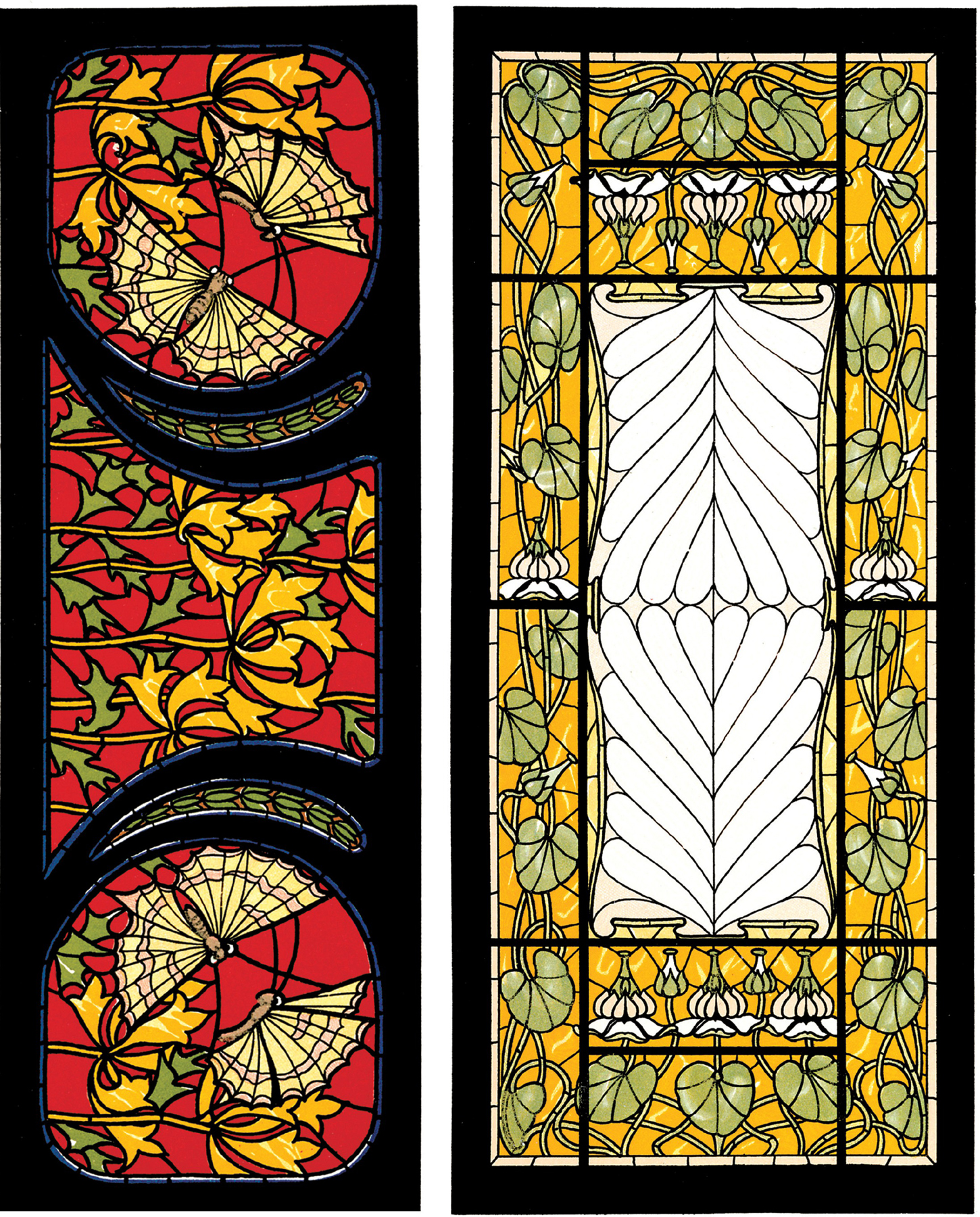
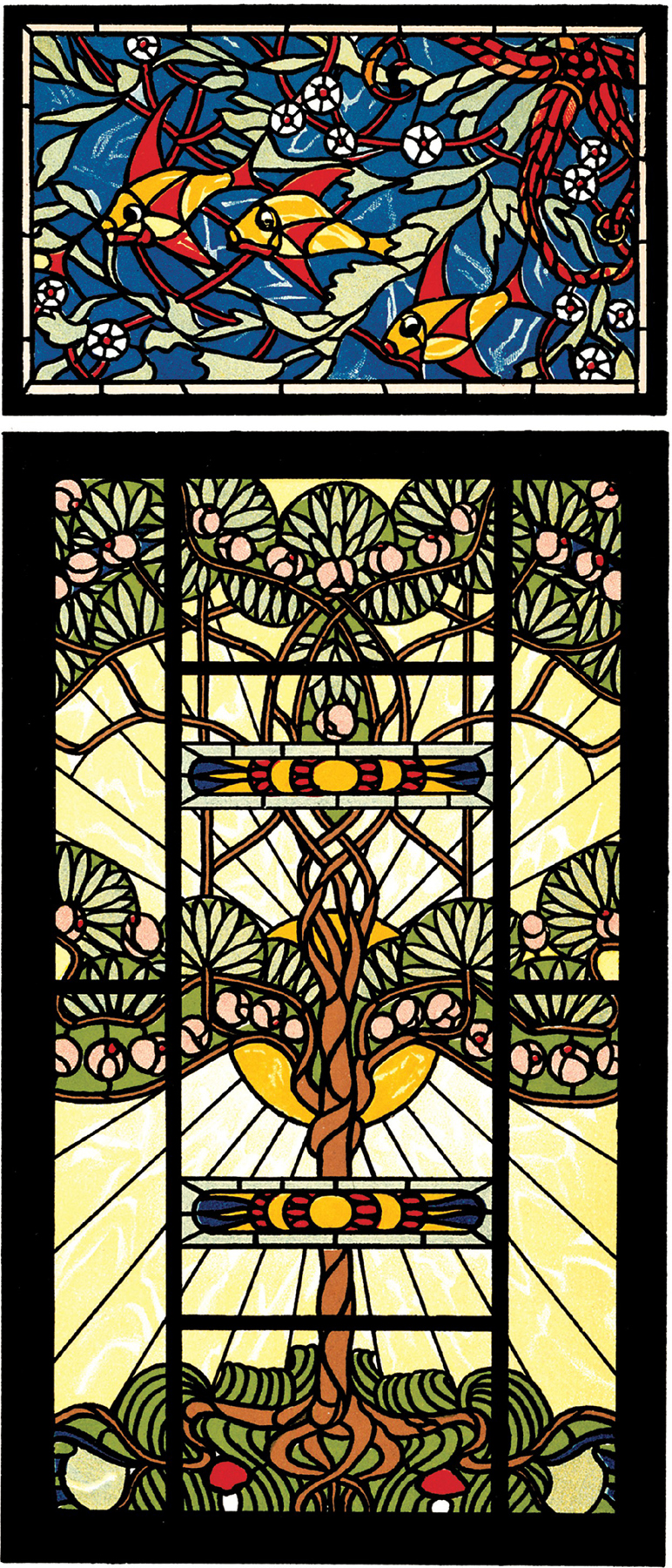

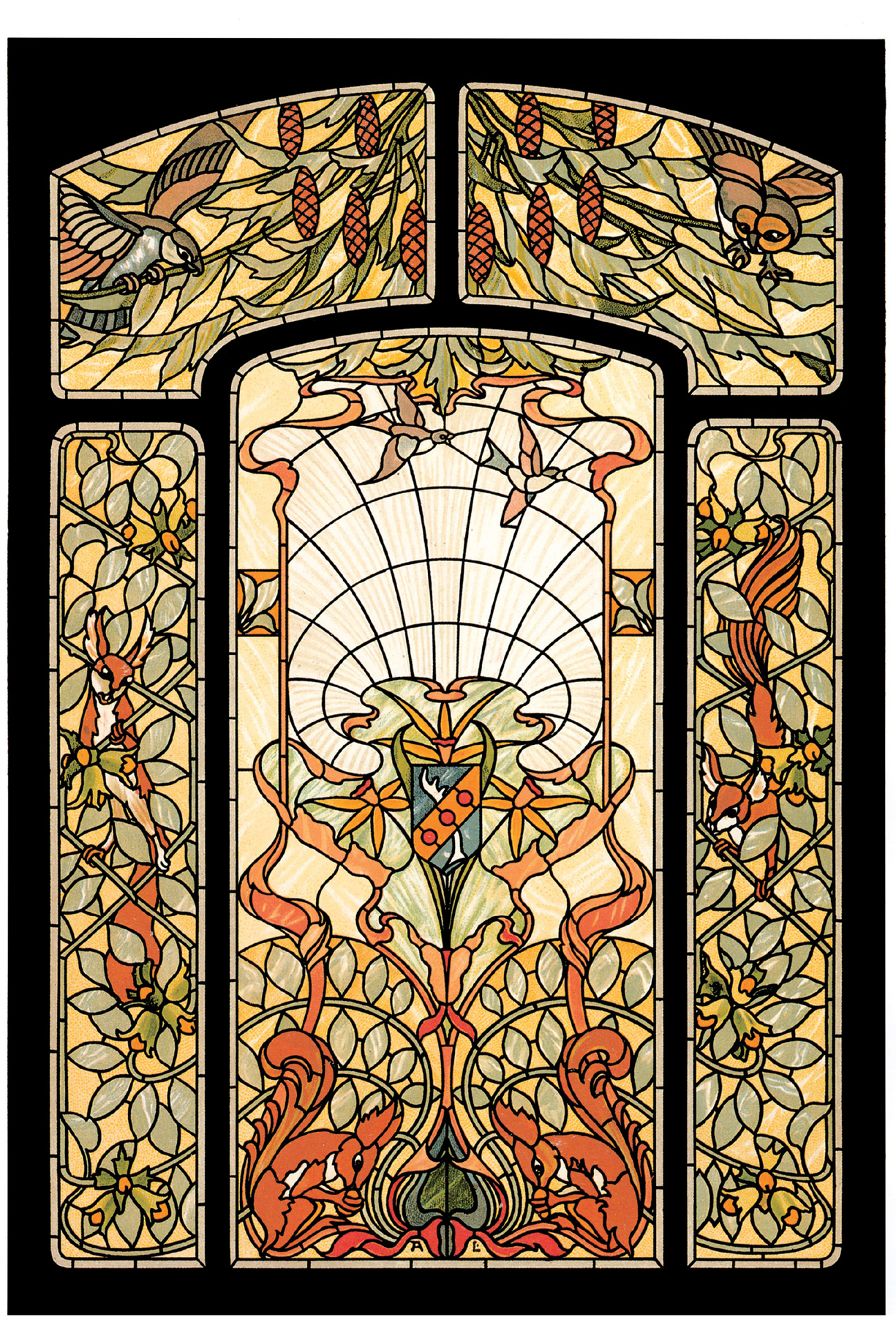
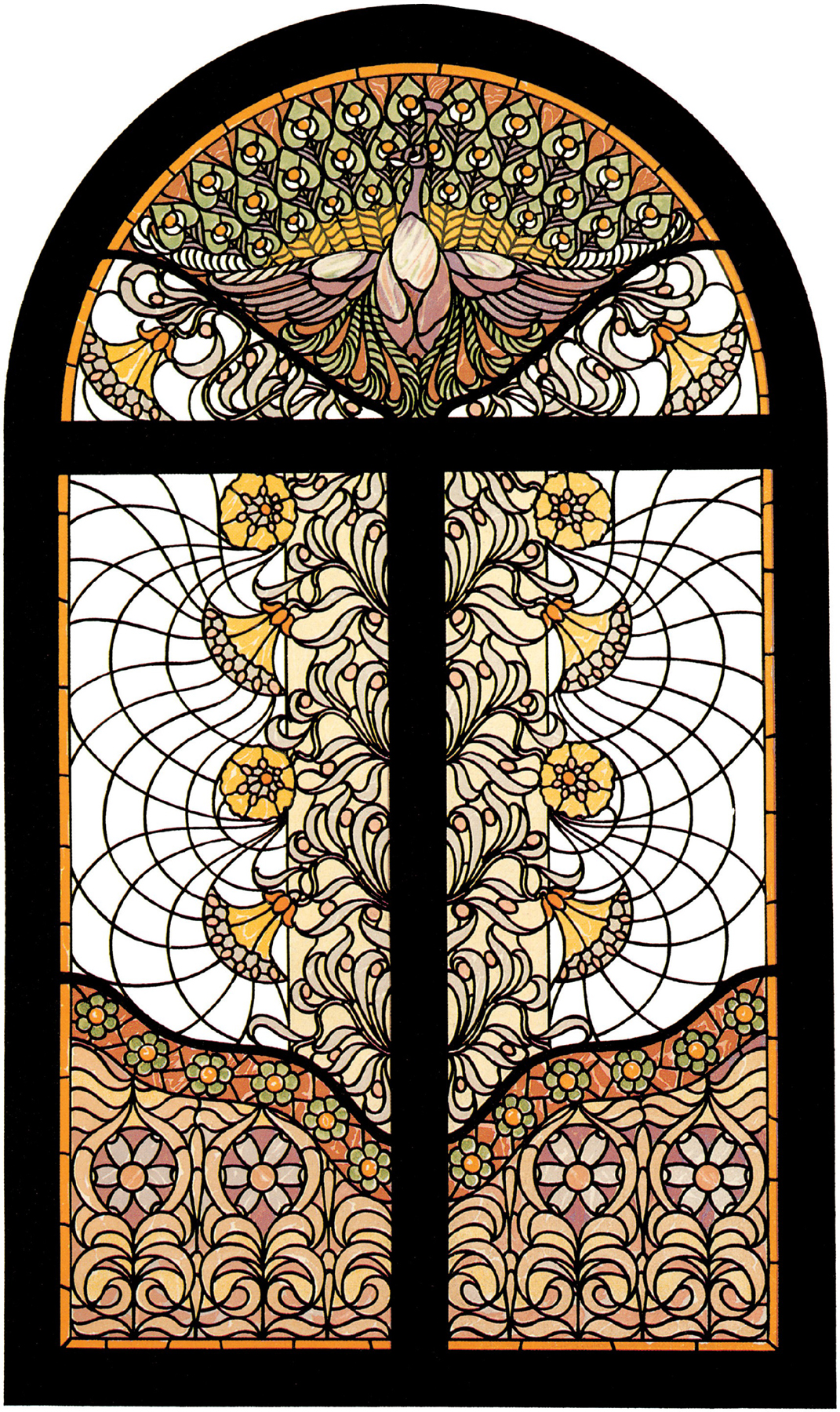
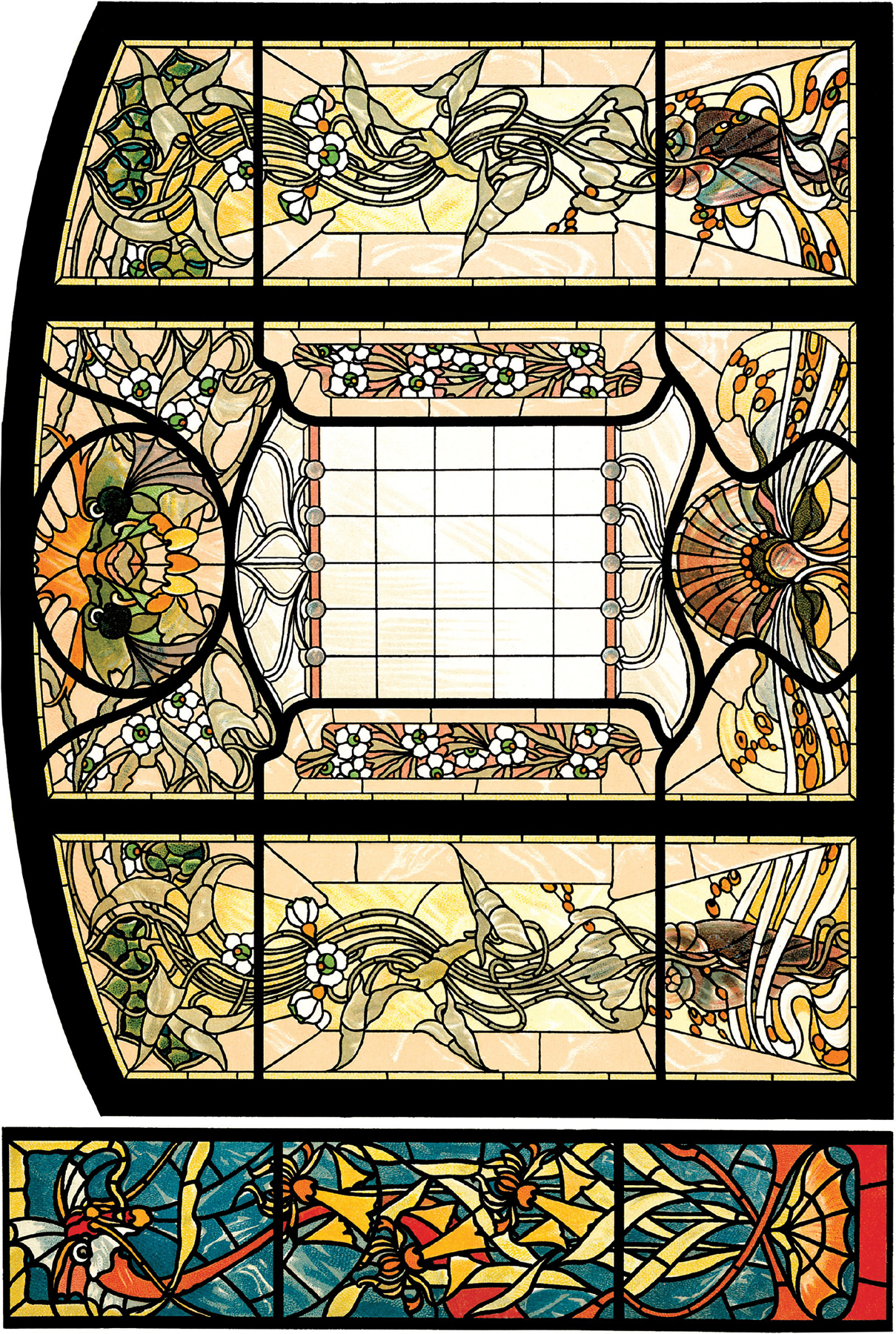
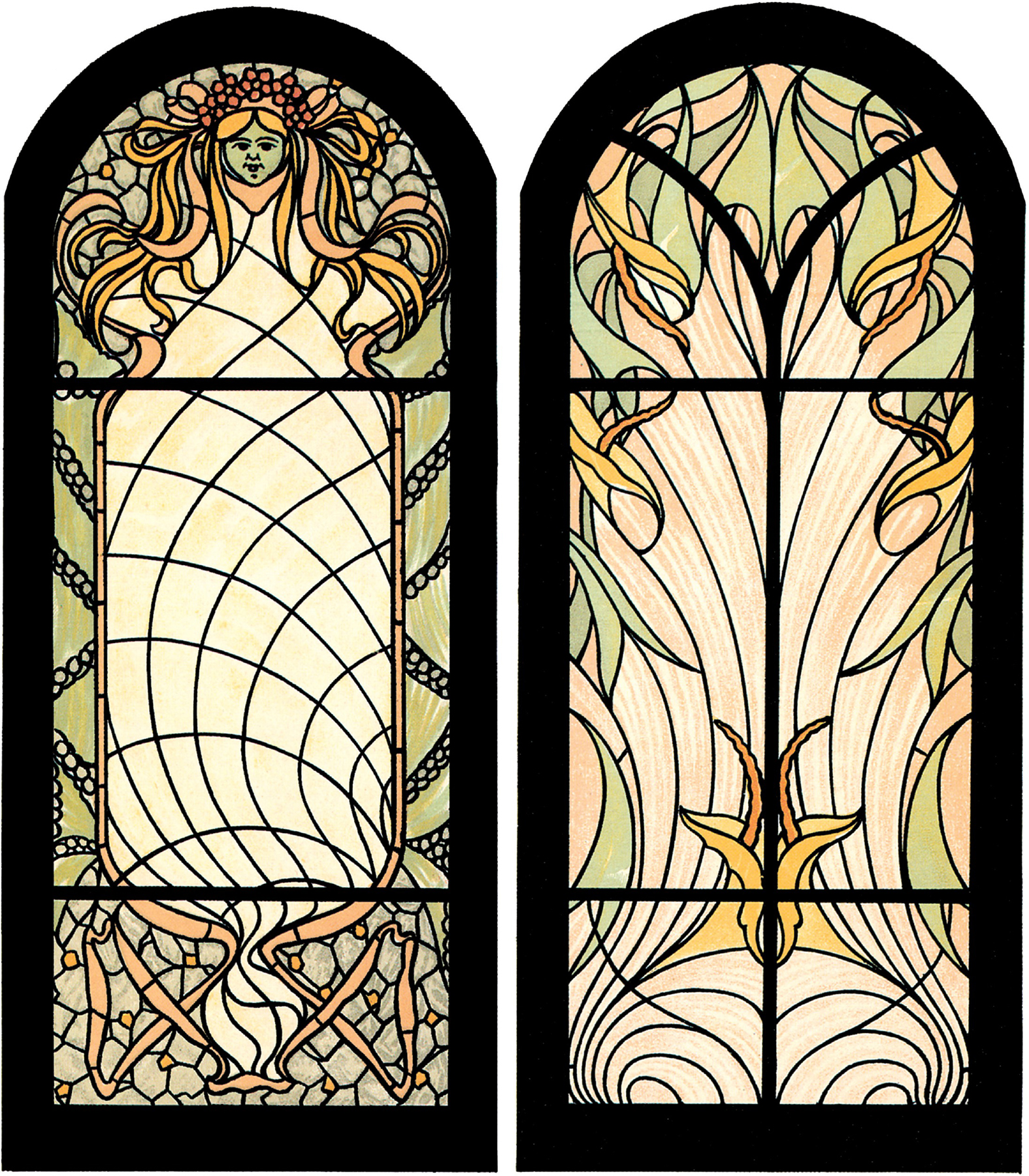

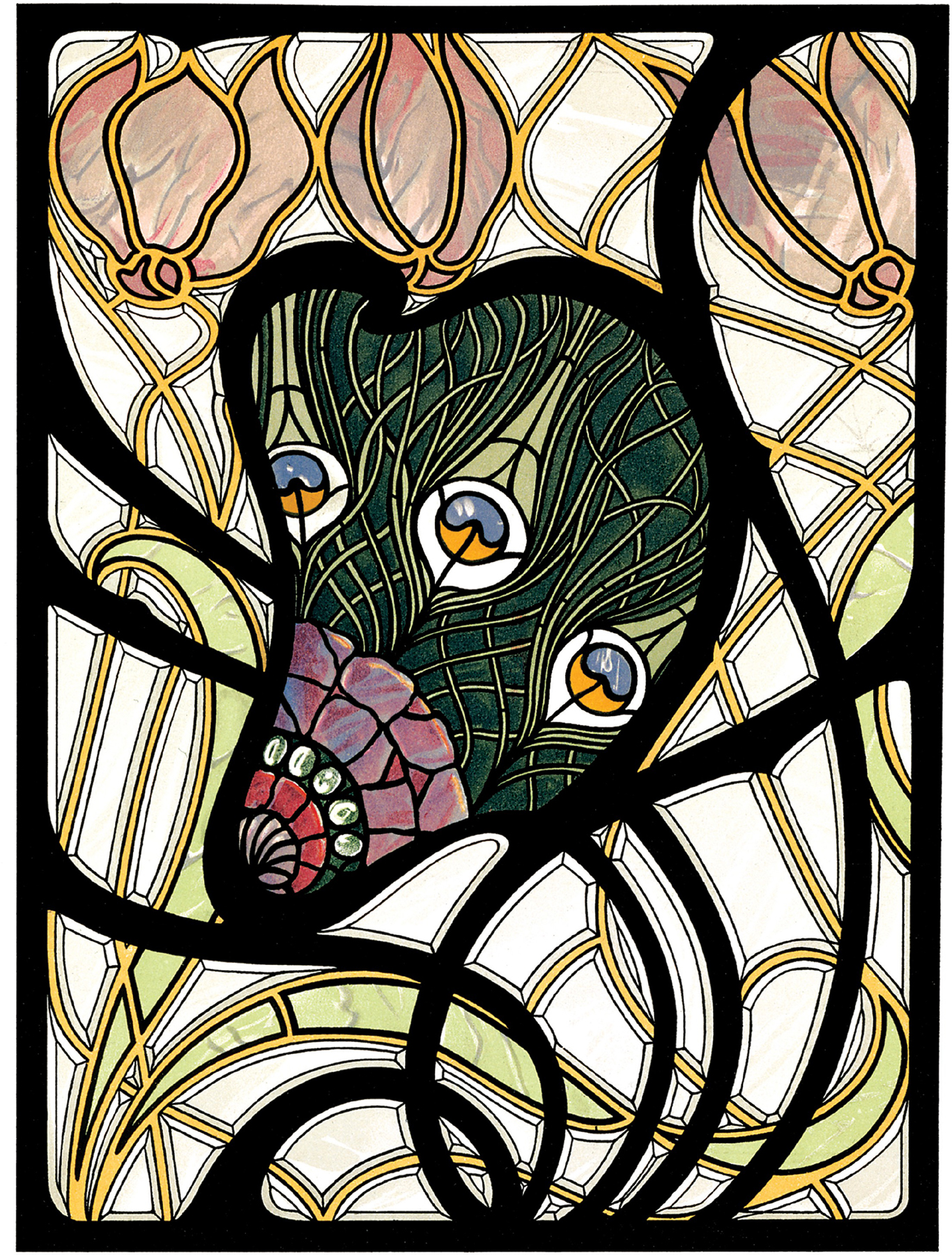
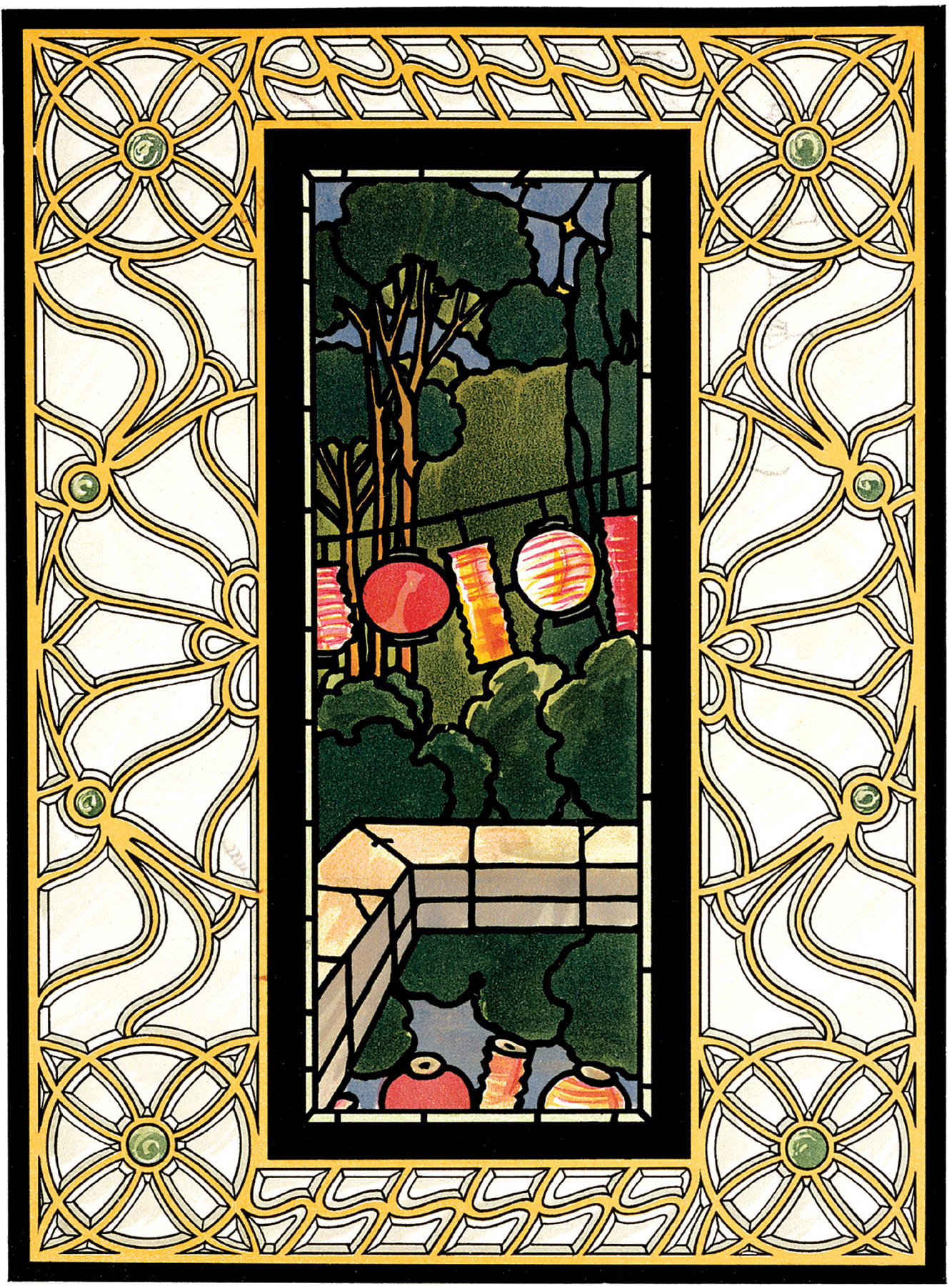
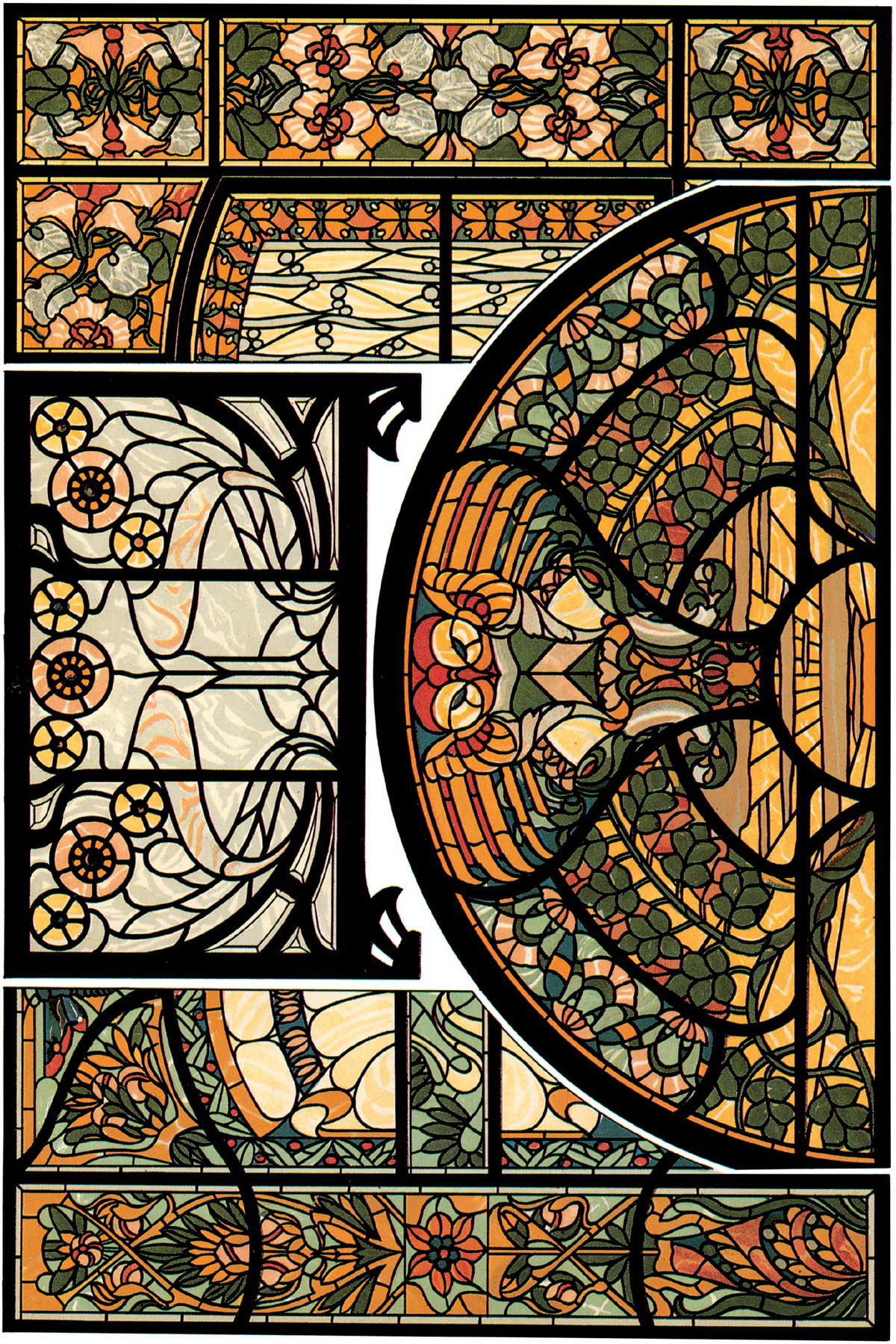

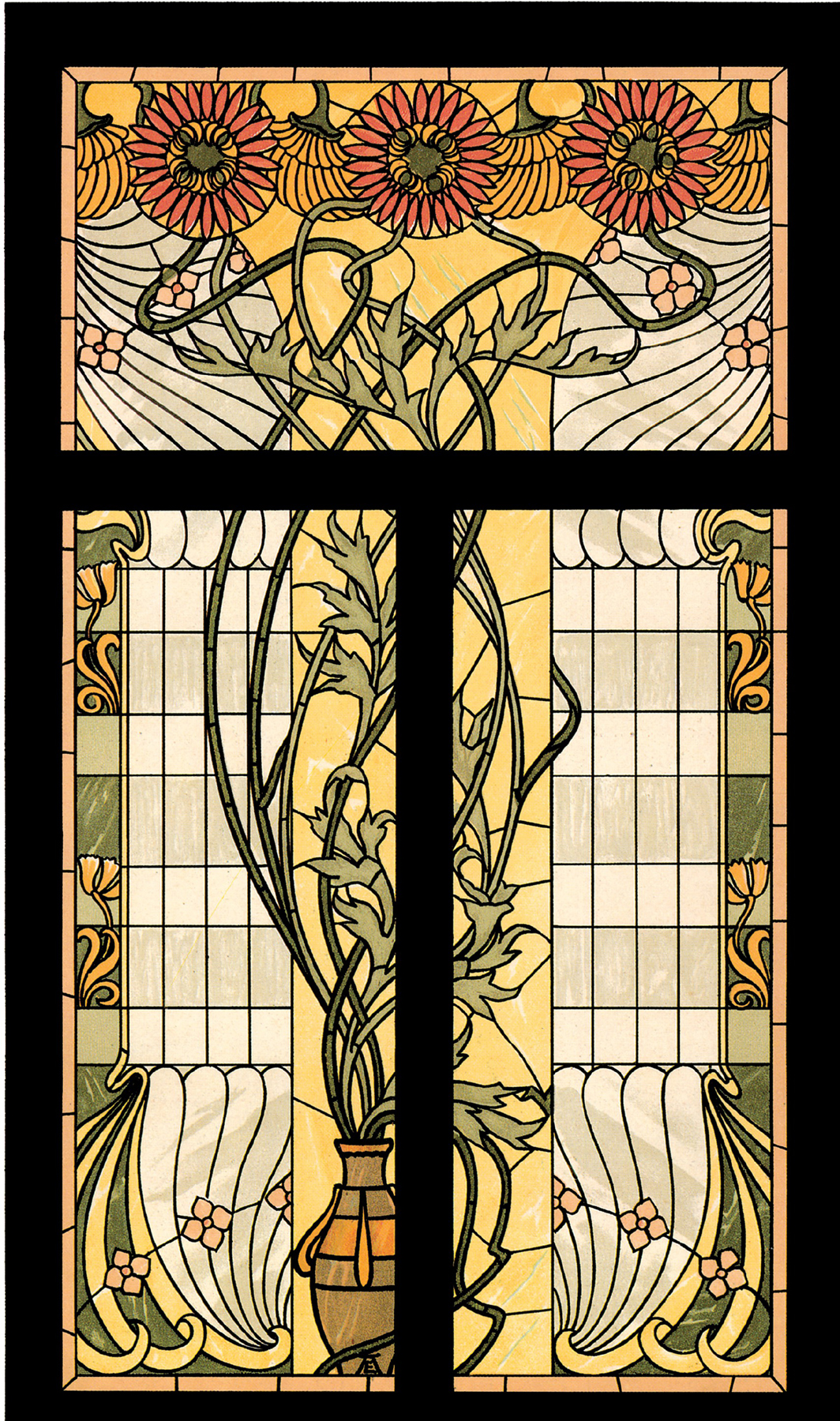
Next page
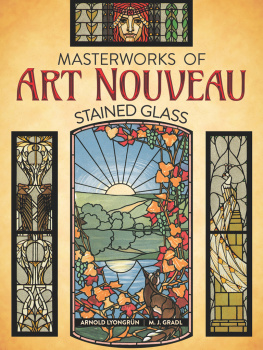

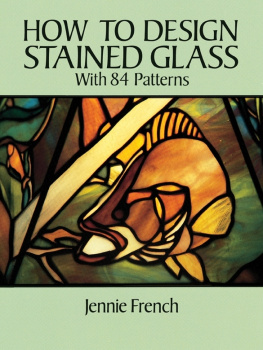

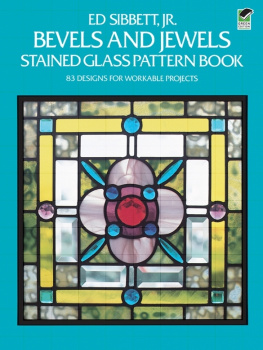

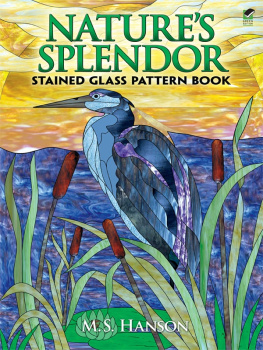
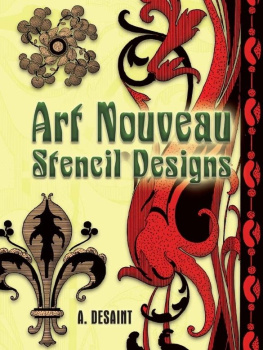

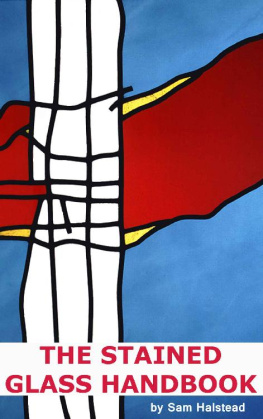
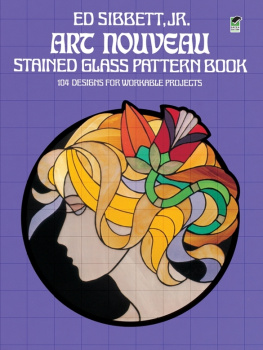
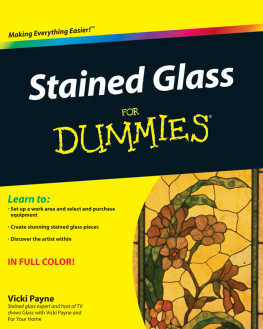
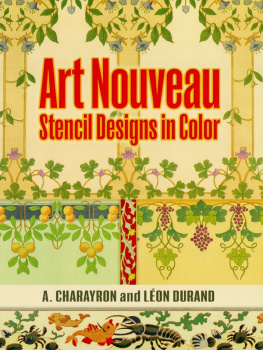
 NOTE At the close of the nineteenth century, the revolution in industrial processes met with humanitys reluctance to distance itself from nature. These two opposing forces gave birth to the artistic form that became known as Art Nouveau, which combined graphic, linear designs with subjects that included all forms of flora and fauna and the most ideal elements that nature could offer. The Art Nouveau style has become highly representative of the period, and its application to all branches of art survives more than a century laternot solely historically, but in appreciation as well. Its influence is still seen in typography, architecture, and print design of all kinds, and it remains a source of beauty to a wide audience. During the first decade of the twentieth century, the Art Nouveau movement was at its peak, and its influence could be seen in all the applied arts. Perhaps nowhere did it shine more than in stained glass design.
NOTE At the close of the nineteenth century, the revolution in industrial processes met with humanitys reluctance to distance itself from nature. These two opposing forces gave birth to the artistic form that became known as Art Nouveau, which combined graphic, linear designs with subjects that included all forms of flora and fauna and the most ideal elements that nature could offer. The Art Nouveau style has become highly representative of the period, and its application to all branches of art survives more than a century laternot solely historically, but in appreciation as well. Its influence is still seen in typography, architecture, and print design of all kinds, and it remains a source of beauty to a wide audience. During the first decade of the twentieth century, the Art Nouveau movement was at its peak, and its influence could be seen in all the applied arts. Perhaps nowhere did it shine more than in stained glass design. This book belongs to the Dover Pictorial Archive Series. You may use the designs and illustrations for graphics and crafts applications, free and without special permission, provided that you include no more than ten in the same publication or project. For permission for additional use, please email the Permissions Department at or write to Dover Publications, Inc., 31 East 2nd Street, Mineola, New York 11501.
This book belongs to the Dover Pictorial Archive Series. You may use the designs and illustrations for graphics and crafts applications, free and without special permission, provided that you include no more than ten in the same publication or project. For permission for additional use, please email the Permissions Department at or write to Dover Publications, Inc., 31 East 2nd Street, Mineola, New York 11501. PUBLISHERS NOTE The nineteenth century experienced the revival of the art of stained glass, at first in an imitation of the Gothic style, and later on following contemporary trends in art. The sinuous forms of the Art Nouveau style, which flourished at the turn of the century, lent themselves perfectly to the medium of stained glass. The first section of this book reproduces all of the designs from two rare portfolios created by [Ernst] Arnold Lyongrn, an artist noted for his landscapes, portraits, and genre scenes. His work is marked by inventiveness in form and color as well as by a winning sense of humor, particularly in his depictions of animals. The plates include images of a peacock, parrots, butterflies, and frogs; a host of flowers; and even some humans engaged in work and play.
PUBLISHERS NOTE The nineteenth century experienced the revival of the art of stained glass, at first in an imitation of the Gothic style, and later on following contemporary trends in art. The sinuous forms of the Art Nouveau style, which flourished at the turn of the century, lent themselves perfectly to the medium of stained glass. The first section of this book reproduces all of the designs from two rare portfolios created by [Ernst] Arnold Lyongrn, an artist noted for his landscapes, portraits, and genre scenes. His work is marked by inventiveness in form and color as well as by a winning sense of humor, particularly in his depictions of animals. The plates include images of a peacock, parrots, butterflies, and frogs; a host of flowers; and even some humans engaged in work and play.

























